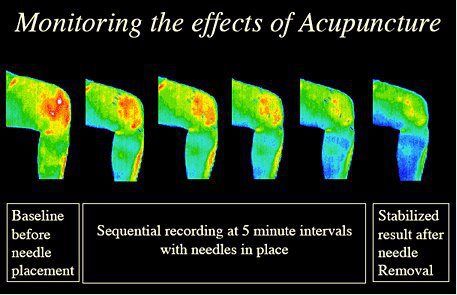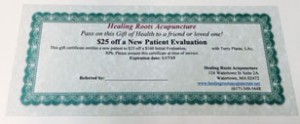Acupuncture, part of the tradition of Oriental medicine, is a medical system for both the treatment and prevention of disease. It stimulates the body to aid and accelerate its own natural healing processes.
Acupuncture is truly holistic in that it takes an integrated view of the patient. Where applicable, we analyze and treat issues of the body, mind and emotions, as they interact and affect one another. Accordingly, treatment is geared to the individual patient, not the presenting disease; in the process, the disease is resolved.
Acupuncture, as part of Oriental medicine, is truly preventative medicine, even though it effectively treats disease. In ancient China, the village physician was paid while the villagers were well; when the villagers became ill, the physician stopped getting paid. This was truly a “health” care system, where prevention of disease was paramount.
In our modern era, people in good health can continue to thrive simply by receiving treatments four times a year, during the change of seasons, when the body is under the most stress.

How it Works:
Acupuncturists
- Diagnose energy imbalances in the body
- Determine a treatment principle to address the imbalances
- Devise a prescription of acupuncture points to restore balance
The acupuncture points are most commonly stimulated by the insertion of very thin needles, which access the Qi (‘chee’) flow of energy in the body. Qi circulates through the body along well-defined pathways, known as meridians or channels. By imposing an outside force on the acupuncture points, the flow of Qi is adjusted.
Needling acupuncture points
- Stimulate the nervous system to release chemicals in the spinal cord, brain and in the muscles
- Often trigger the release of hormones that influence the body’s internal regulating system
- Improve energy and biochemical balance
- Stimulate the body’s natural healing abilities
- Promote physical and emotional well-being
What it Treats
Most people associate acupuncture with effective pain relief. Worldwide, acupuncture is used to address many other problems, including:
- Musculo-skeletal Pain
- Stress Reduction
- Gastrointestinal Disorders
- Chronic Fatigue and Decreased Immune Response
- Women’s Health Issues
- Colds and Flus, especially in the early stages
The World Health Organization (WHO) published (in 1979!) a list of diseases for which classical acupuncture is considered appropriate treatment:
WE TREAT THESE DISEASES, AND MANY MORE
Infections
- Colds and flu
- Bronchitis
- Hepatitis
Internal
- Hypoglycemia
- Asthma
- High blood pressure
- Ulcers
- Colitis
- Indigestion
- Hemorrhoids
- Diarrhea
- Constipation
- Diabetes
Eyes, ears, nose and throat
- Deafness
- Ringing in the ears
- Earaches
- Poor eyesight
- Dizziness and vertigo
- Sinus infection
- Sore throat
- Hay fever
- Dermatological
- Eczema
- Acne
- Herpes
Musculo-skeletal and neurologic
- Arthritis
- Neuralgia
- Sciatica
- Back pain
- Bursitis
- Tendonitis
- Stiff neck
- Bell’s palsy
- Trigeminal neuralgia
- Headache
- Stroke
- Cerebral palsy
- Sprains
Genito-urinary and reproductive
- Impotence
- Infertility
- Pre-menstrual syndrome (PMS)
- Pelvic inflammatory disease (PID)
- Irregular period or cramps
- Morning sickness
- Vaginitis
- Menopause
Mental-emotional anxiety
- Depression
- Stress
- Insomnia
For more information about traditional acupuncture, see Acufinder.com – Q & A Library



